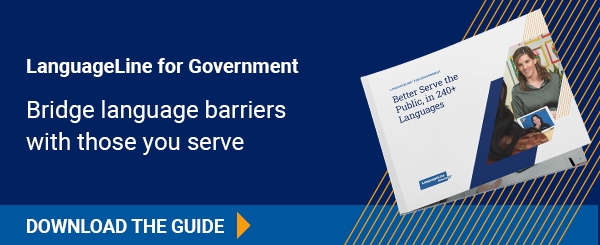
For a majority of Americans, banking is just a part of life. However, roughly a third of the population has little or no access to a bank, according to the FDIC’s National Survey of Unbanked and Underbanked Households.
That means banks and other financial institutions looking to expand their reach have a tremendous opportunity to do so by reaching these underserved groups — provided they use the right approach. Here’s a look at the unique needs of unbanked and underbanked populations and what organizations can do to bridge the gap.
Who Are the Unbanked and Underbanked?
The FDIC found that 7.7 percent of households, or 9.6 million households, were unbanked, meaning they had no checking or savings account with an FDIC-backed financial institution.
Another 20 percent, or 24.8 million households, were underbanked. They had an account with a mainstream financial institution but also used one or more alternative financial services in the previous year, such as check cashing, remittances, payday loans, auto title loans, or rent-to-own services.
A large portion of the unbanked or underbanked are immigrants. About 51 percent of foreign-born non-citizens met these criteria, according to the FDIC.
Why Are So Many Immigrants Unbanked or Underbanked?
There are many reasons why individuals choose to use alternatives to traditional banks. To explore the driving factors among immigrants in particular, the Department of Consumer Affairs conducted a study of immigrants living in New York City. Among the most common reasons:
- They don’t think they need one
- They aren’t sure how to open an account
- They’re concerned about fees or minimum balances
- They know where to find a bank nearby
- They don’t trust banks
- They don’t feel comfortable speaking English
As the study notes, language access is a major hurdle. The FDIC’s survey found that 34.9 percent of Spanish-only households are unbanked, compared to 7.1 percent of households where languages other than Spanish are spoken. In other words, Spanish-only households are five times less likely to use a bank or credit union.
Overcoming Barriers to Banking
As the Consumer Financial Protection Bureau (CFPB) notes, language barriers cause major problems for immigrant households. Consumers who do not speak English well may have trouble understanding financial products and comparing costs. They are also at a greater risk of making ill-informed financial decisions and potentially even falling victim to fraud and scams, according to the CFPB.
To educate these populations, the CFPB hosts a Spanish-language site and offers printable financial education materials in several languages. Their call centers are also equipped to help consumers in more than 180 languages.
Individual financial institutions can use language services to reach unbanked and underbanked immigrants in similar ways. To draw in these groups, they should prominently display signs welcoming all individuals and promoting the languages they offer. Having marketing materials available in the most common languages of their area and hosting outreach events encouraging individuals to sign up for a free checking account can also help.
Once they have them in the door, they need to be sure they can deliver on their promises. That includes having complicated information about products and services translated first into plain language anyone can understand, then ensuring these documents are translated into multiple languages.
Additionally, financial service institutions need to have access to on-site interpreters who can assist customers and answer their questions. If hiring multilingual staff is not feasible, establishing a relationship with a language services provider for on-demand phone interpreting or video remote interpreting can ensure that a customer’s questions and issues can be resolved quickly and effectively.
Seizing the Opportunity to Reach Underbanked Populations
A dislike or distrust of banks is the second most common reason for being unbanked, according to the FDIC’s survey results. In fact, it was the top reason for 15 percent of respondents.
The first step to establishing trust is effective communication.
Once banks and other financial institutions are able to effectively communicate with consumers in their own language, they can move forward with other initiatives to build relationships with unbanked populations. The Appleseed Network, a nonprofit organization that works to address social issues, including those faced by immigrant populations, outlines several ways banks are doing this:
- Allowing other forms of identification, such as foreign government-issued IDs
- Offering remittance services (50 percent of immigrants who responded to a survey by the Appleseed Network said they send money to their home country at least once a month)
- Offering financial education classes (85 percent of immigrants surveyed said they would participate)
- Expanding outside bank branches into high schools, community centers, groceries stores, and other areas where immigrant populations visit more frequently
The potential for banks and other financial institutions to bring in new revenue from unbanked populations is huge, particularly among immigrants.
Mitchell Bank, a Cardinal Bank branch in Milwaukee, Wis., offers just one example of the impact of taking proactive steps. After opening a full-service bank branch operated in a 70 percent Hispanic high school, implementing financial literacy programs and helping individuals without Social Security numbers open savings accounts, among other things, the bank saw an increase of more than 6,000 transactions per month in the first three years, according to a whitepaper by the Appleseed Network. Eighty percent of its new account holders were Hispanic, and the majority had previously been unbanked.
LanguageLine® Can Help
Learn more about how your financial institution can use language services to start reaching unbanked or underbanked populations today. Check out our eBook, “The Future of Finance: Banking on the Massive Potential of Multicultural Consumers.”
LanguageLine has been the world leader in innovative language-access solutions since 1982. The company sets the global standard for phone, video, and onsite interpreting, as well as translation of the written word. LanguageLine is trusted by more than 30,000 clients to enable communication with the limited English proficient, Deaf, and Hard of Hearing communities. LanguageLine provides the industry’s fastest and most dependable access to more than 35,000 professional linguists in 290-plus languages — 24 hours a day, seven days a week, 365 days a year. Please do not hesitate to contact us.

